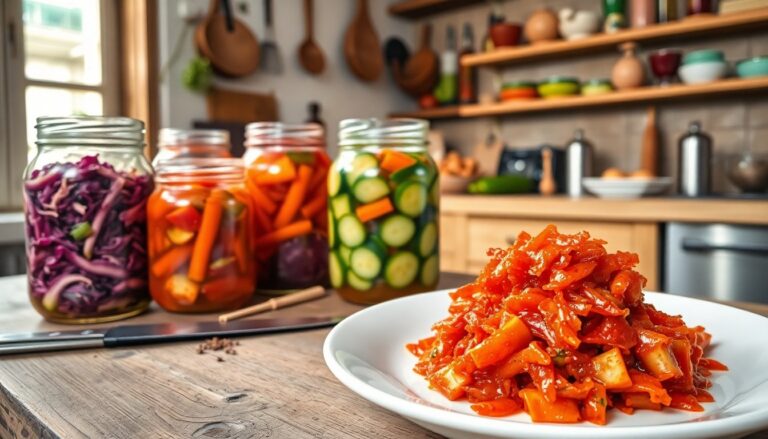Argomenti trattati
Exploring the art of fermentation in modern cuisine
Imagine the tangy aroma of freshly fermented vegetables wafting through the air, a sensory invitation that stirs the appetite. The palate does not lie—fermentation is a culinary process that tantalizes the senses and adds profound complexity to our dishes.
The story behind fermentation
Behind every jar of kimchi or sauerkraut lies a narrative that spans thousands of years. Fermentation is an ancient technique rooted in the necessity of preserving food and enhancing its flavor. Cultures worldwide have embraced this method, from Japanese miso to Italian giardiniera, each contributing its unique character and history.
Understanding the technique
At its core, fermentation involves the transformation of sugars into acids, gases, or alcohol by microorganisms such as bacteria and yeast. This process not only preserves food but also develops umami—the elusive fifth taste that makes dishes irresistible. For instance, during the fermentation of cabbage, lactic acid bacteria convert sugars into lactic acid, producing a vibrant, tangy flavor that elevates any dish.
Connecting with tradition and territory
In today’s culinary landscape, chefs are rediscovering the benefits of filiera corta—the short supply chain—by sourcing local ingredients for their fermentation endeavors. This approach supports local farmers and ensures that the flavors are intimately connected to the terroir. From the wild herbs of the Apennines to the fresh vegetables found at farmers’ markets, each ingredient embodies the essence of its origin, inviting us to taste the land.
An invitation to experience
As we delve into the world of fermentation, consider exploring its potential in your own kitchen. Begin with simple recipes like pickled radishes or fermented carrots, allowing your creativity to flourish. Remember, behind every plate of fermented food, there is a story waiting to be discovered. So, gather your jars and embark on this flavorful journey!

